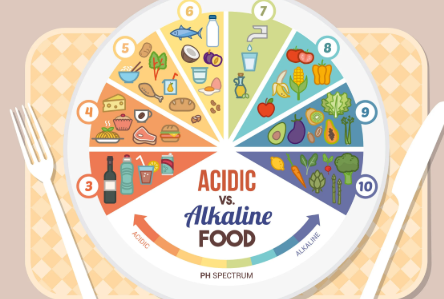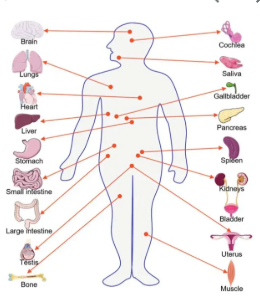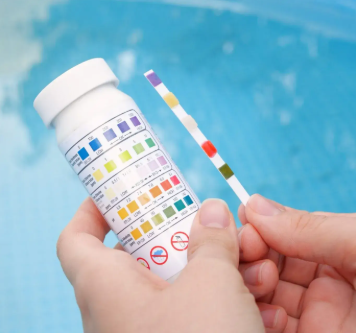The human body is an incredible system of interconnected processes, each influencing the other in subtle but significant ways. One fascinating relationship exists between oxygen flow and pH, two factors that are crucial for maintaining good health and proper bodily function. Though they might seem unrelated at first glance, oxygen flow and pH levels are closely linked through the delicate balance that sustains life. This article explores how these elements interact, why this connection matters, and what it means for your overall well-being.
What Is Oxygen Flow?
Oxygen flow refers to the movement of oxygen through the bloodstream to various tissues and organs. When you breathe in, oxygen enters your lungs and attaches to hemoglobin molecules in red blood cells. These oxygen-loaded cells then travel through arteries and capillaries to deliver oxygen where it’s needed most. Oxygen is essential for cellular respiration, the process by which cells produce energy by converting glucose and oxygen into carbon dioxide, water, and ATP (adenosine triphosphate), the energy currency of cells.
Proper oxygen flow is vital because it powers every cell in your body. Without adequate oxygen, cells cannot function efficiently, which can lead to fatigue, impaired organ function, and, in severe cases, tissue damage.
What Is pH and Why Does It Matter?
The term pH measures the acidity or alkalinity of a solution. On the pH scale, which ranges from 0 to 14, a pH of 7 is neutral. Numbers lower than 7 indicate acidity, while numbers higher than 7 indicate alkalinity. The human body maintains a tightly regulated pH balance, especially in the blood, where a slightly alkaline pH of about 7.35 to 7.45 is optimal for health.
pH is critical because enzymes, proteins, and cellular processes depend on an environment that is neither too acidic nor too alkaline. Even slight shifts in pH can disrupt biochemical reactions, impair oxygen transport, and affect overall metabolism. The body uses various mechanisms, including buffering systems and respiratory function, to maintain pH within a narrow, healthy range.
How Oxygen Flow Influences pH
One of the primary ways oxygen flow connects to pH is through the respiratory system’s role in regulating acid-base balance. When cells use oxygen during metabolism, they produce carbon dioxide (CO2) as a waste product. CO2 dissolves in the blood and forms carbonic acid, which lowers pH by increasing acidity. To maintain balance, the respiratory system adjusts breathing rates to either expel more CO2 or retain it.
When oxygen flow is efficient, the lungs remove carbon dioxide effectively by increasing breathing rate or depth as needed. This helps keep the blood pH within its optimal range. Conversely, if oxygen flow is compromised—due to conditions like chronic obstructive pulmonary disease (COPD), asthma, or even high altitude—the body may struggle to remove CO2 efficiently. This can lead to respiratory acidosis, a condition where blood becomes too acidic.
In essence, oxygen flow and pH balance are part of a dynamic feedback system. Adequate oxygen delivery supports normal metabolism and CO2 removal, helping keep blood pH stable. Any disruption in oxygen supply can ripple through this system, affecting acid-base balance.
The Role of Hemoglobin in Oxygen and pH Regulation
Hemoglobin, the protein in red blood cells that carries oxygen, also plays a key role in regulating pH. Hemoglobin’s affinity for oxygen is influenced by the blood’s pH level through what is known as the Bohr effect. When blood becomes more acidic (lower pH), hemoglobin releases oxygen more readily. This is beneficial because tissues producing more acid—often a sign of high metabolic activity—receive more oxygen.
Conversely, when blood pH is higher (more alkaline), hemoglobin holds onto oxygen more tightly, making less oxygen available to tissues. This fine-tuned mechanism ensures that oxygen delivery matches the metabolic needs of tissues, linking pH and oxygen flow in a continuous, adaptive process.
Why This Connection Matters for Health
Understanding the relationship between oxygen flow and pH can shed light on various health conditions and guide healthier choices. For example, in respiratory illnesses where oxygen flow is reduced, the body’s pH balance can shift, leading to complications. Monitoring and managing oxygen levels can help prevent dangerous acid-base imbalances.
Exercise is another example where this connection becomes evident. During intense physical activity, muscles consume more oxygen and produce more carbon dioxide and lactic acid, temporarily lowering pH in muscle tissue. The body responds by increasing breathing rate to expel CO2 and restore pH balance, while oxygen delivery ramps up to meet the demand. This interplay helps sustain physical performance and recovery.
Furthermore, pH imbalances can influence oxygen transport in the blood, potentially impacting energy levels and overall vitality. Maintaining healthy breathing patterns, avoiding pollutants that impair lung function, and staying physically active can support optimal oxygen flow and pH balance.
Lifestyle Tips to Support Healthy Oxygen Flow and pH Balance
Promoting efficient oxygen flow and balanced pH involves simple but effective lifestyle choices. Prioritizing good respiratory health is fundamental. This means avoiding smoking and exposure to air pollutants that can damage lung tissue and reduce oxygen capacity.
Regular physical activity encourages better lung function and increases the body’s ability to deliver oxygen. Deep breathing exercises, such as those practiced in yoga or meditation, can enhance oxygen intake and help regulate pH through improved CO2 removal.
Diet also influences pH balance. While the body tightly regulates blood pH, consuming a diet rich in fruits and vegetables helps maintain overall acid-base homeostasis by providing alkaline-forming nutrients. Staying well-hydrated aids kidney function, which plays a secondary role in long-term pH regulation.
Lastly, managing stress is essential, as stress can affect breathing patterns and lead to shallow breaths that reduce oxygen intake and disrupt pH balance. Mindfulness practices and adequate rest support both oxygen flow and acid-base equilibrium.
The Bigger Picture: Oxygen Flow, pH, and Longevity
Looking beyond day-to-day health, the connection between oxygen flow and pH has implications for aging and longevity. Efficient oxygen delivery supports cellular repair and immune function, while balanced pH preserves enzyme activity and metabolic stability. Together, they contribute to a body that operates smoothly and resists disease.
Scientists continue to explore how disruptions in oxygen and pH balance contribute to chronic illnesses such as diabetes, cardiovascular disease, and cancer. Understanding these mechanisms better may unlock new strategies for prevention and treatment.
Conclusion
The connection between oxygen flow and pH is a beautiful example of the body’s intricate design. Oxygen fuels our cells, while pH ensures the right environment for life’s chemical reactions. Their interaction governs how well our body performs, adapts, and heals.
By appreciating this connection, you can make informed decisions that support your respiratory health, maintain acid-base balance, and promote overall wellness. Whether through mindful breathing, regular exercise, or balanced nutrition, nurturing this delicate balance helps you breathe easier, feel energized, and live healthier.
Remember, every breath you take is not just about oxygen—it’s a step towards harmony within your body’s chemistry.






